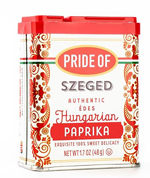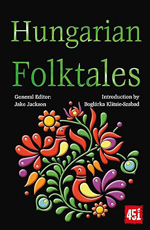1852 The governor of Hungary who had been exiled from his homeland arrived in Cleveland.
1863 Morris Black founded the Hungarian Aid Society.
1866 Jewish Hungarians founded the Temple B'nai Jeshurum
1880 The first Hungarian settlement in the Western Reserve area
1881 The Hungarian Aid Society was reorganized as the Hungarian Benevolent and Social Union.
1891 The First Hungarian Reformed Church was formed at East Blvd. and Buckeye
1892 St. Elizabteh Hungarian Roman Catholic Church opened on Buckeye
1893 St. John The Baptist Hungarian Greek Catholic Church opened on Buckeye
1894 A weekly paper, The Catholic Hungarian's Sunday was founded by Charles Bohm. The paper's name, in Hungarian was Magyar Katolikus Vasarnapia.
1896 The Szabadsaq (Liberty) was founded, in Cleveland. Although this started as a weekly Hungarian newspaper it soon became the first daily newspaper for Hungarians in the country. 1897 Charles Bohm started the first Hungarian Catholic parish, St. Elizabeth's.
1898 Celebrations were held throughout Cleveland honoring the 1000th anniversary of Hungary as an independent state.
1902 The United Hungarian Societies was formed.
1904 The United Hungarian Society erected a bronze statue in University Circle. The statue was of Louis Kossuth. Ohio's governor Nash presided over the ceremony.

1906 The First Hungarian Lutheran Church was founded
1906 Cleveland Hungarians, prompted by Editor Tihamer Kohanyi of the Szabadsag in 1903, erected a statue of George Washington in Budapest. It is the only statue of Washington in a Communist county. 1914 First Magyar Church was formed. The First Magyar Presbyterian Church, 12604 Buckeye Rd.
1938 The Hungarian Cultural Garden was dedicated

1950 Care packages are sent to Catholic priests and nuns in Hungary who are forced to live under a communist regime. St. Emerich's Catholic Church on West 22nd Street led the collection of goods. 1954 The Free Hungarian University of Cleveland (Magyar Szabadegvetem) was put together. Heading the organization was Dr. Ferenc Somogyi. 1956 Following the uprising, about 3000 young persons came to Cleveland. The Hungarians Freedom Fighters' Federation was formed. Cleveland was the only U.S. city to send clothing, a plane load valued at $100,000, to the Austrian refugee camps filled with Hungarians who made their bid for freedom. The venture was sponsored by the Cleveland Press under direction of Theodore Andrica, a former Press nationalities writer.
1958 Hungarian born George Szell became director of the Cleveland Orchestra.
1961 Hungarians from all over the world came to Cleveland for a three day event sponsored by the Hungarian Congress. The Arpad Academy Award was given to encourage arts and science projects by and for Hungarians. 1969 The 1,000th birthday of Saint Stephen, the first King of Hungary was celebrated with festivities throughout the city, a display in the Higbee Store downtown, a parade and a commemorative Mass at the Cathedral.
1974 Cardinal Mindszenty visited Cleveland 1975 Cardinal Mindszenty Plaza was dedicated by the City of Cleveland. The Plaza is located at 12th and Lakeside. (It was re-dedicated in 1997)

1978 Zolton Gambos, publisher of a Hungarian newspaper in Cleveland is chosen to be part of an entourage returning the crown of St. Stephen to the Hungarian people. It was a highly controversial decision made by President Carter representing improved Hungarian-American relations. The 1000 year old crown had been given to American service men for safe keeping. 1980 A centennial celebration of the first permanent Hungarians to settle in the area 1994 The Csárdás Dance Company was founded by Richard Graber. It is a non-profit organization aimed at presenting traditional and contemporary Hungarian dances. 2006 100th anniversary of the dedication of the statue of George Washington in Budapest 2006
2006 50th Anniversary Celebration of Hungarian Freedom Fighters commemorated at Wolstein Center
Back to Top
Back to Cleveland Hungarians | 













